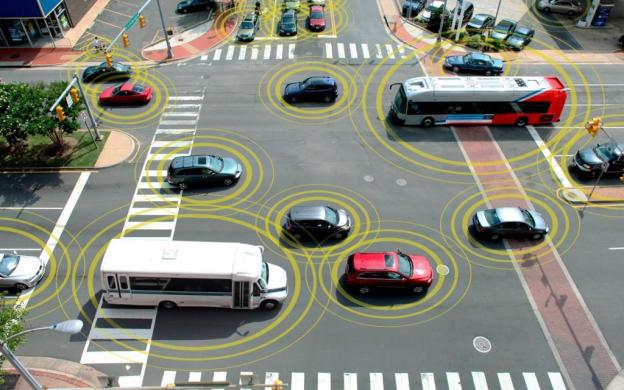 Because the airwaves are getting crowded, the Federal Communications Commission (FCC) will reconsider a 1999 decision that set aside a slice of bandwidth for connected car technologies, Automotive News (sub. required) reports. The car-exclusive band could potentially be opened up to use by other devices.
Because the airwaves are getting crowded, the Federal Communications Commission (FCC) will reconsider a 1999 decision that set aside a slice of bandwidth for connected car technologies, Automotive News (sub. required) reports. The car-exclusive band could potentially be opened up to use by other devices.
The 5.9-GHz band was originally set aside for tech that would allow cars to communicate with one another as a way of preventing crashes. Such a system, called vehicle-to-vehicle (V2V) is currently being tested in Michigan.
The National Highway Traffic Safety Administration (NHTSA) says this tech could eliminate 80 percent of crashes where the driver is not impaired. While the tech has been slow to develop, automakers were counting on having their own Wi-Fi band to implement it.
Yesterday, the FCC voted unanimously to “advance a proposal that would open up that same band to devices such as computers and cell phones,” Automotive News reports. However, a final ruling may not come until next year.
FCC Chairman Julius Genachowski said increasing congestion in commercial areas like airports and convention centers justifies opening the 5.9-GHz band to other devices. He also believes connected car technologies can coexist with other Wi-Fi devices.
Carmakers aren’t so sure. The Alliance of Automobile Manufacturers, a trade group made up of most of the major carmakers, is urging the FCC not to allow non-automotive uses of the 5.9-GHz band.
The group believes other Wi-Fi signals could create interference, and that connected car technology is close enough to market that carmakers will need the band soon.
“It is imperative that, as we move forward, we do adequate research and testing on potential interference issues that could arise from opening up this band to unlicensed users and that the commission not rush to judgment,” the Alliance said in a statement.
Carmakers want the FCC to wait for a report by the National Telecommunications and Information Administration, which isn’t due out until 2014.


